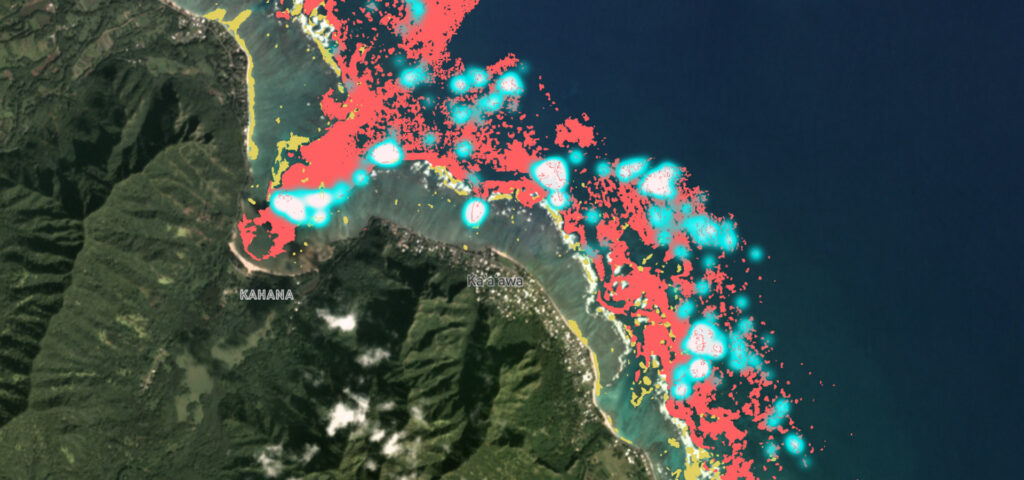
Members of the NOAA Coral Reef Watch (CRW) program, including ESSIC/CISESS Faculty Specialist, Erick Geiger collaborated with Arizona State University (ASU) and Vulcan Inc. to contribute to a new Allen Coral Atlas feature that uses satellite-observed brightening to help identify the extent and severity of coral bleaching events.
Piloted for the Hawaiian Islands, this new feature combines NOAA CRW’s daily 5km-resolution satellite sea surface temperature (SST) time-series data for the Main Hawaiian Islands and Northwestern Hawaiian Islands 5km Regional Virtual Stations with Planet Dove satellite visible-band imagery of coral reefs in Hawaii. These are used to create a weekly-updated view of “observed brightening”; i.e., changes in color that might be associated with bleaching of shallow water corals. ASU researchers are now using NOAA CRW’s daily global 5km satellite coral bleaching heat stress monitoring products, featured as another layer of the Allen Coral Atlas, to identify areas to watch for coral bleaching using changes in brightness detected by Planet’s satellites. While piloted in Hawaii during recent bleaching events, the ASU team plans to test this new capability elsewhere in the world.
The NOAA CRW program is an initiative supported by the Earth System Science Interdisciplinary Center (ESSIC)-administered Cooperative Institute for Satellite Earth System Studies (CISESS). ESSIC/CISESS Scientists include Associate Research Scientist Dr. Gang Liu; Senior Faculty Specialist Jacqueline De La Cour; and Faculty Specialist Erick Geiger. The team also includes ESSIC/CISESS subawardees, Drs. William Skirving and Blake Spady, at ReefSense in Townsville, Australia.
To learn more about the Allen Coral Atlas and its new feature, click here: “Allen Coral Atlas Helps Sound The Alarm For Reef Bleaching Events”.





